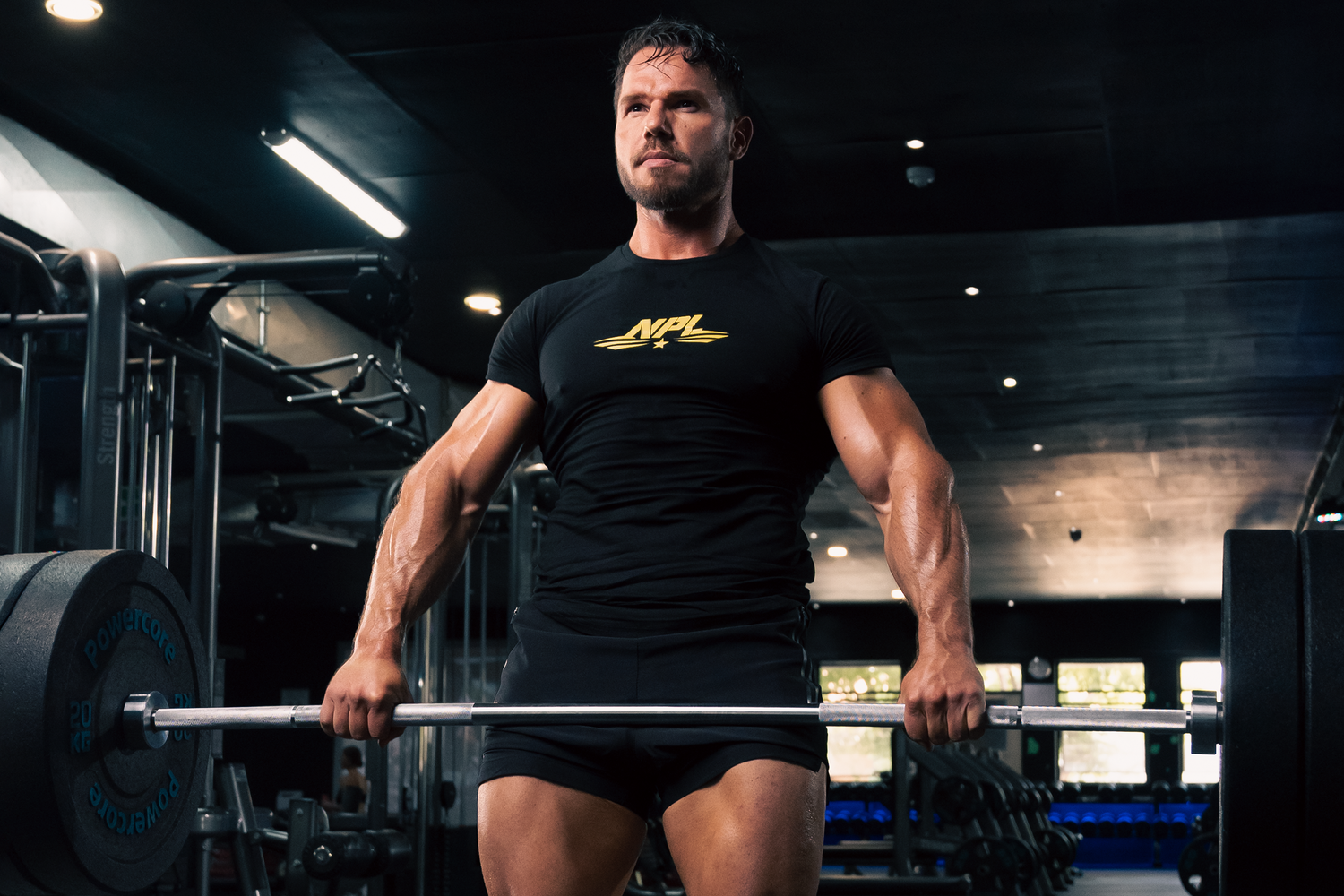Hip Hinge vs Squats: What are the differences

Lower exercises can be broadly broken down into two categories, the squat and the hinge. Both movements have their place in your training program, and you should always try to incorporate both for a good balance in the gym. The reason for this is because of the fundamental mechanics of the hinge and squat movements and how they focus and overload specific muscles.
What is a hip hinge?
The first way to differentiate the two is by focusing where the primary movement is. For the hinge, the hips are being driven back while maintaining a vertical shin alignment. A good example of this movement is the deadlift, where we see a hinging movement focusing more load on the back and upper legs because of the force being driven vertically through the heel. Now that does not mean a deadlift is a hip hinge, there is more involved in a conventional deadlift than just the hip hinge, but that is where we see the primary movement.
Many beginner lifters will often struggle with more advanced forms of the hip hinge, eg. kettlebell swings. The movement is not supposed to use any momentum to raise the weight, clearing just over your hips is fine. The hip hinge is the primary movement of the swing, with that force driven at the hip joint and swung forward, hence the name of the exercise.
What is a squat?
For a squat movement, the ankle joint will be more involved depending on variations and we see movement on the knee. For now, think of ankle movement and the knee passing over the ankles. With this movement, there is an emphasis on the quads and thus, maximising the overload in the upper legs.
In a similar way to the hip hinge, the squat can be applied in a number of different ways. Split squats and lunges are a type of squat movement instead placing emphasis on a single leg. Like with the previous example this doesn’t mean a lunge is a squat, it just means lunging and the compound movements involved use the squat as a start of the action.
Adding it all together:
Depending on your goals you can apply this movement in different ways, the lower back can be strengthened safely and effectively using a kettlebell swing without ever needing to deadlift or do back extensions. Similarly a conventional squat can be changed out every now and then for a narrower stance and elevated heels, shifting the working muscles and focusing on your quads in the exercise. Like with any exercise - form is key. Each movement pattern may seem simple on its own but when we start to branch out into fitness - our physical capabilities exercises become harder and more isolated.
This isolation takes the hip hinge and squat and builds onto the main movement. So while you’re expanding your understanding of the gym and how we can use different positions and placement to get the results we want, it’s always important to keep safety in mind. Progress at a pace where you are able to keep the same form and ensure you don’t hip hinge when you’re supposed to be squatting, or squat when you should be hip hinging. Happy lifting!!
References:
Snarr, R. L., & McGinn, W. (2015). Addressing weaknesses in squat patterns. Journal of Sport and Human Performance, 3(1), 1-12.
Dr. John Rusin, The Squat vs. The Hip Hinge: Know The Difference, https://drjohnrusin.com/the-squat-vs-the-hip-hinge/
Hinge vs Squat (2018), https://celebrationcrossfit.com/hinge-vs-squat/





